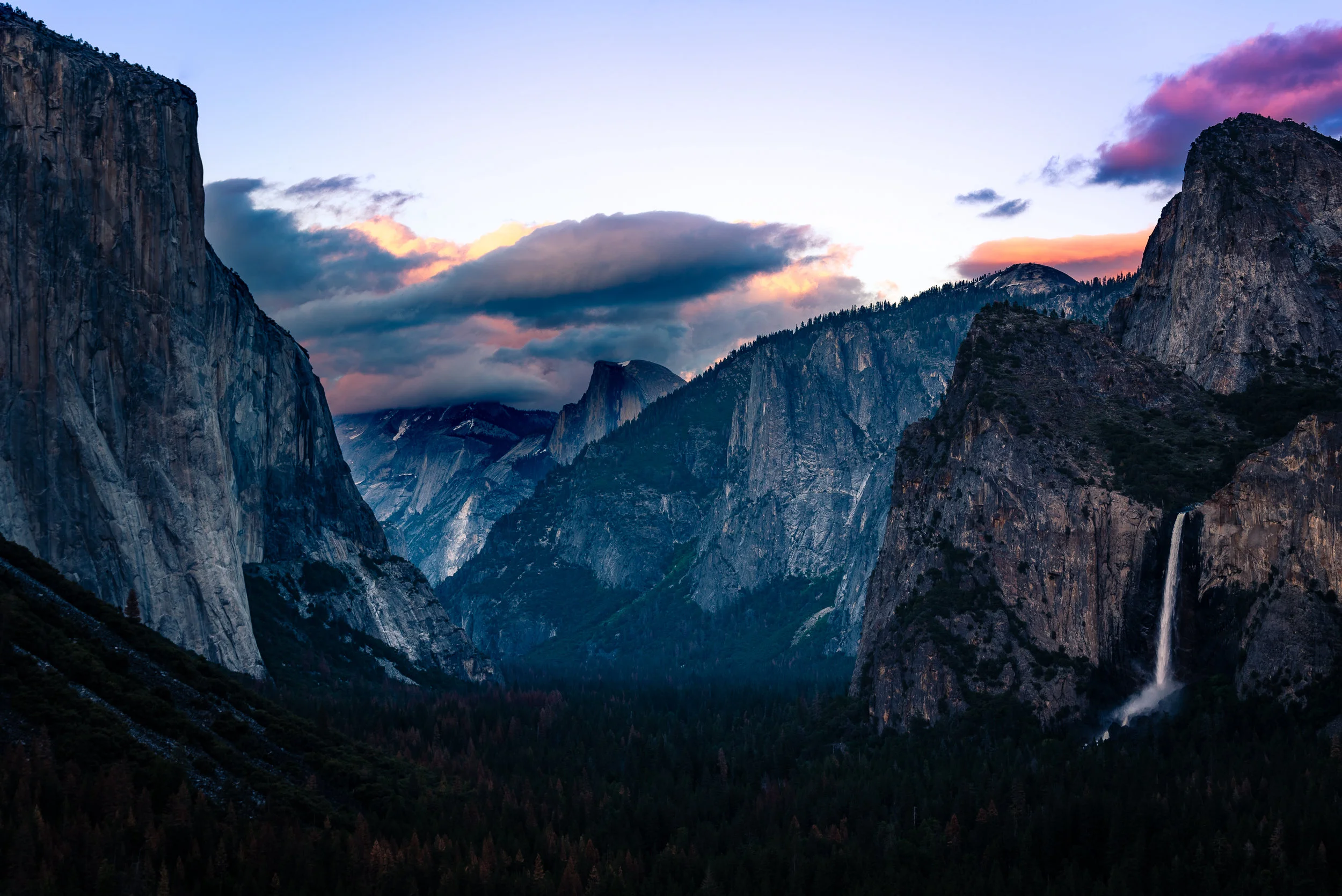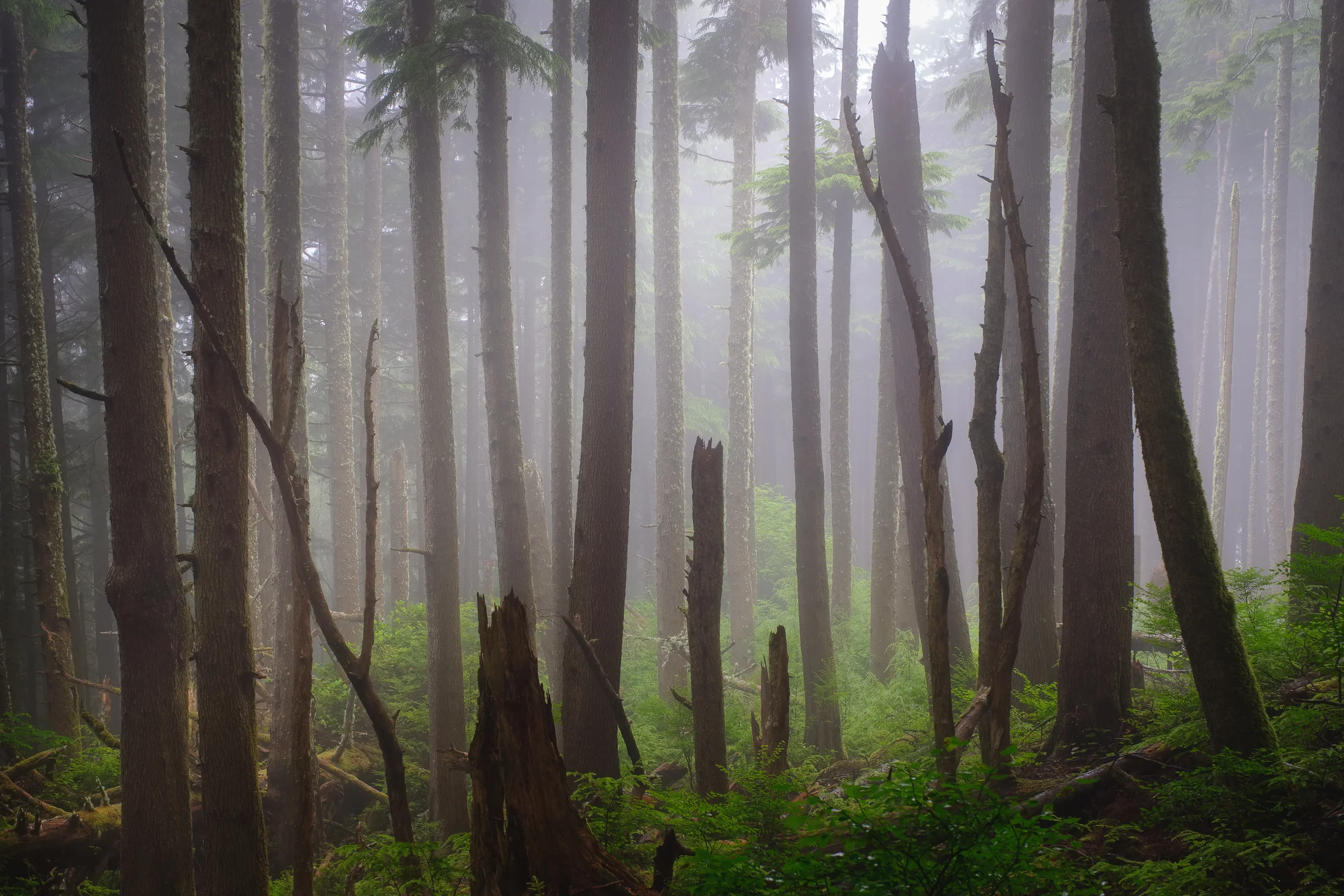There are plenty of examples of cliches in photography. Most of them stem out of portrait photography, and I give my fiancé plenty of schtick for getting High School Senior Portraits on a couch in a field. Aside from couches in fields and railroad tracks which have recently plagued portraits, there are cliches in landscape photography I prefer to avoid.
I took my fiancé’s college senior portraits and when I did I didn’t have any images taken that were cliche or as ridiculous as some out there. I take images like this because they won’t end up aging badly. As more people do these ‘popular’ techniques or styles the look ages the images taken in an ugly way. It is a time-capsule of regrettable decisions.
Yosemite View - my contribution to overshooting this spot
Taking this into landscape photography there are a couple of different ways we can hit cliches. The locations just like in portrait photography can start to be redundant and overdone. There is also the possibility of stale compositions in general that get old over time. The last way is the post-processing typically being overdone and swinging wildly to effect. So, let’s dive into what makes landscape photography a cliche in and of itself before mutually agreeing to avoid doing any of these now or in the future!
Everybody has photographed Yosemite as a landscape photographer. It is a big cliche to shoot tunnel view no matter how beautiful it is! The same goes for any and every destination that rises and falls out of popularity online week to week. It seems as though everybody decides that they have to go to Iceland now and Namibia the next month. How about some originality in where we choose to go? There have to be places that speak to you more individually.
I wouldn’t go to the midwest just because it got popular out of nowhere to photograph because it doesn’t inspire me photographically. That isn’t to say you shouldn’t if you love the farmland and heart of the country! What I am saying here is that we should all find that subject or type of subject that connects without creativity. This way, we can avoid becoming a cliche of the landscape photography category. The photography we create has a deeper level of understanding and value proposition this way.
A composition is partially connected to location, naturally. If you go to a location and photograph it the same way everybody before you has there is nothing you are adding to the visual conversation. It is just agreeing with whoever was first to shoot there that it is a nice view and you wanted your own version of it.
This makes a ‘postcard shot’ into the cliche that it is. Just like any tourist on vacation with a point and shoot camera you have comp-stomped the original photographer. If you are any self-respecting photographer you should avoid doing this as often as possible unless you are really that much better/ have a revolutionary technique of capturing that composition.
The other way composition can become a cliche is through having a similar way of capturing a type of subject to everyone else. Making the water blur through a scene every time or having a person in a red jacket standing on a cliff are excellent examples of cliched compositions. These types of images really start to date themselves over time just like people in the fields of tulips or sunflowers are doing currently on social media. It all becomes a bit cringey in hindsight.
The final way that we run into major cliches in creating landscape photography is through the post-processing that we choose to do. My favorite example of this is a recent one in High Dynamic Range or also better known in acronym form as HDR. We saw it popularized by the likes of Trey Ratcliff where the images lacked any contrast whatsoever and were painted with a gaudy amount of fluorescent colors. A truly horrible time to be viewing landscape images as the technique was popularized.
Today, we see it swinging back the other way. Many of the popular images are being edited to the point where the entire image has gone dark and little to no color. The amount of contrast that is being injected into scenes has become unnatural. Everything looks more like Lord of the Rings than it does the residential backyard the photographer took a photo of. I am a firm believer that we should all try to shoot for the middle here in processing so that we can avoid having to re-edit images in a few years because of how much tastes have changed.



